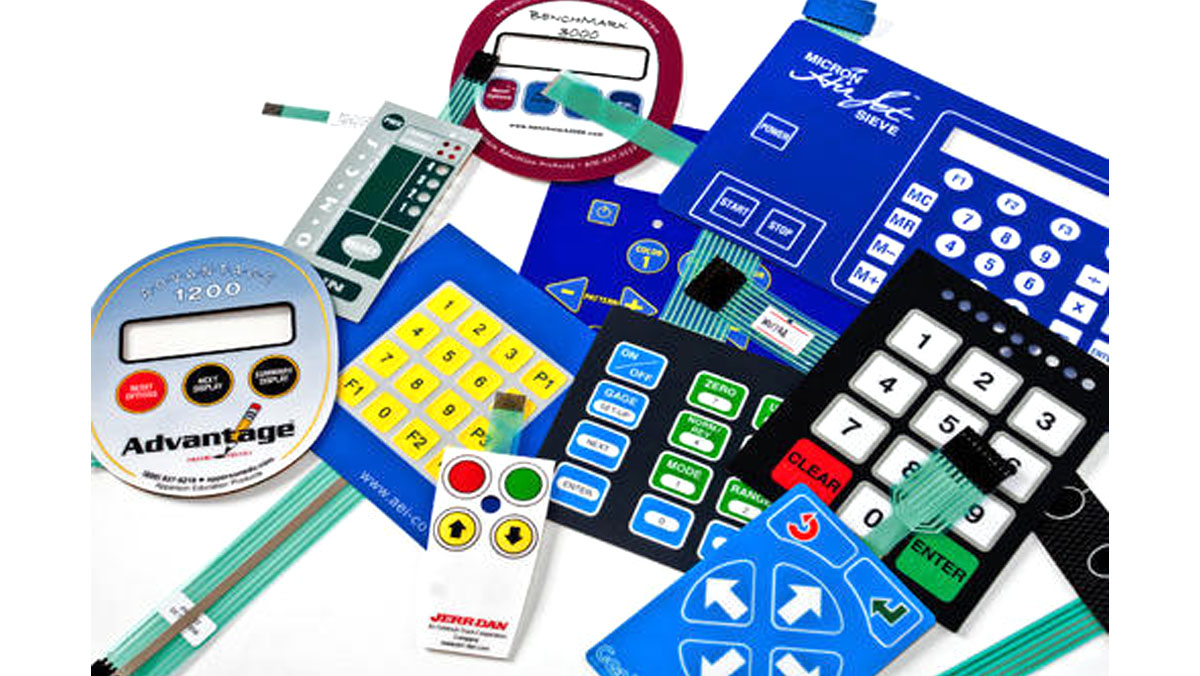Choosing the Right Membrane Switch for Your Business Needs
Choosing the Right Membrane Switch for Your Business Needs
Blog Article
Comprehending Membrane Changes: The Key to Resilient and Trustworthy Controls

What Are Membrane Layer Switches?
Membrane switches are an innovative remedy in the world of user interface modern technology, combining functionality and style seamlessly. These tools act as a user interface between customers and electronic systems, incorporating numerous components into a compact style. Generally created from flexible, slim layers of materials, membrane layer buttons are designed to react to touch, enabling users to connect with machinery and digital tools successfully.
The main aspects of a membrane button include a printed circuit layer, visuals overlay, and a spacer layer that stops unplanned activation. The visuals overlay can be tailored to show brand name identification or user choices, improving visual appeals while making sure usability. Membrane switches are generally utilized in different applications, consisting of clinical gadgets, customer electronics, and industrial equipment, owing to their toughness and resistance to ecological aspects such as moisture and dust.
Among the crucial advantages of membrane layer buttons is their capability to withstand wear and tear, making them suitable for high-traffic environments. Additionally, they are lightweight and require very little space, permitting innovative styles in product advancement. Overall, membrane layer switches over stand for a functional and efficient option for modern digital interfaces, marrying innovation with user-centric design principles.
How Membrane Changes Work
The operation of membrane switches hinges on a simple yet effective system that equates individual input into electronic signals. When a user presses the button, the leading layer deforms, permitting a conductive component in the circuit layer to make contact with a corresponding conductive pad on the bottom of the graphic overlay.
The design of membrane layer switches can vary, but they frequently include domes or tactile elements to give comments to the customer, boosting the overall experience - membrane switch. The products made use of in membrane switches, such as polyester or polycarbonate, add to their resilience and resistance to ecological elements, including moisture and dirt. The published circuits are generally encapsulated, which safeguards them from wear and tear over time.
Benefits of Membrane Layer Buttons

In addition, membrane layer switches are known for their toughness. Constructed from robust materials, they are immune to dust, moisture, and physical wear, which considerably prolongs their lifespan contrasted to conventional mechanical buttons. This resilience makes them especially appropriate for high-traffic environments and applications requiring longevity.
An additional substantial advantage is the simplicity of cleaning and maintenance. The smooth surface of membrane switches lessens dust accumulation and is typically resistant to spills, making them ideal for setups that call for frequent sanitization.
Additionally, membrane switches use a structured profile, leading to a thinner layout that can be integrated into various tools without including mass. This attribute not just enhances the aesthetic allure yet likewise adds to an extra ergonomic product design.
Applications of Membrane Layer Switches
Functional and user-friendly, membrane layer buttons discover find this applications throughout a vast array of markets, consisting of medical devices, customer electronics, and commercial tools. In the medical area, these buttons are integral to tools such as diagnostic devices, client tracking systems, and infusion pumps, where reliability and ease of cleansing are crucial. Their capacity to keep and withstand extreme environments capability makes them perfect for such applications.

In customer electronics, membrane buttons are used in items like microwaves, cleaning machines, and push-button controls - membrane switch. Their streamlined style permits for user-friendly individual interfaces, boosting the overall user experience while supplying toughness and resistance to tear and wear
Industrial tools likewise benefits from membrane switches, particularly in control panels for equipment and automation systems. These switches supply security versus dirt and dampness, ensuring regular efficiency in difficult browse around these guys environments. Their customizable attributes permit suppliers to customize them to specific operational demands, enhancing efficiency and functionality.
Picking the Right Membrane Layer Switch Over
When picking a membrane layer button, it is necessary to consider different factors that affect performance and viability for details applications. The primary factors to consider include ecological conditions, responsive responses, longevity, and style specs.
First, examine the operating environment; buttons revealed to dampness, chemicals, or severe temperatures need specific materials to guarantee durability and performance. Next off, assess the need for responsive responses. Relying on individual communication, some applications may gain from a responsive action to confirm activation, while others might favor a non-tactile layout for aesthetic reasons.
Longevity is one more vital aspect; membrane layer buttons need to be made to hold up against regular use, impacts, and abrasion. Guarantee the selected button can endure the expected lifecycle, especially in high-usage situations.

Verdict
In final thought, membrane layer switches offer as crucial parts in the layout of resilient and reputable control systems across various sectors. The convenience of membrane layer switches over allows for tailored remedies that satisfy specific Website functional needs, reinforcing their significance in contemporary technology.
Membrane switches stand for an important aspect of modern-day interface layout, blending capability with strength in various applications.Membrane buttons are an innovative solution in the world of customer interface modern technology, incorporating performance and design effortlessly. Usually constructed from flexible, thin layers of products, membrane layer switches are developed to respond to touch, allowing individuals to engage with machinery and digital devices effectively.
The layout of membrane layer switches can vary, but they commonly integrate domes or tactile aspects to give feedback to the user, boosting the total experience.In final thought, membrane changes serve as vital components in the layout of sturdy and reputable control systems across different industries.
Report this page